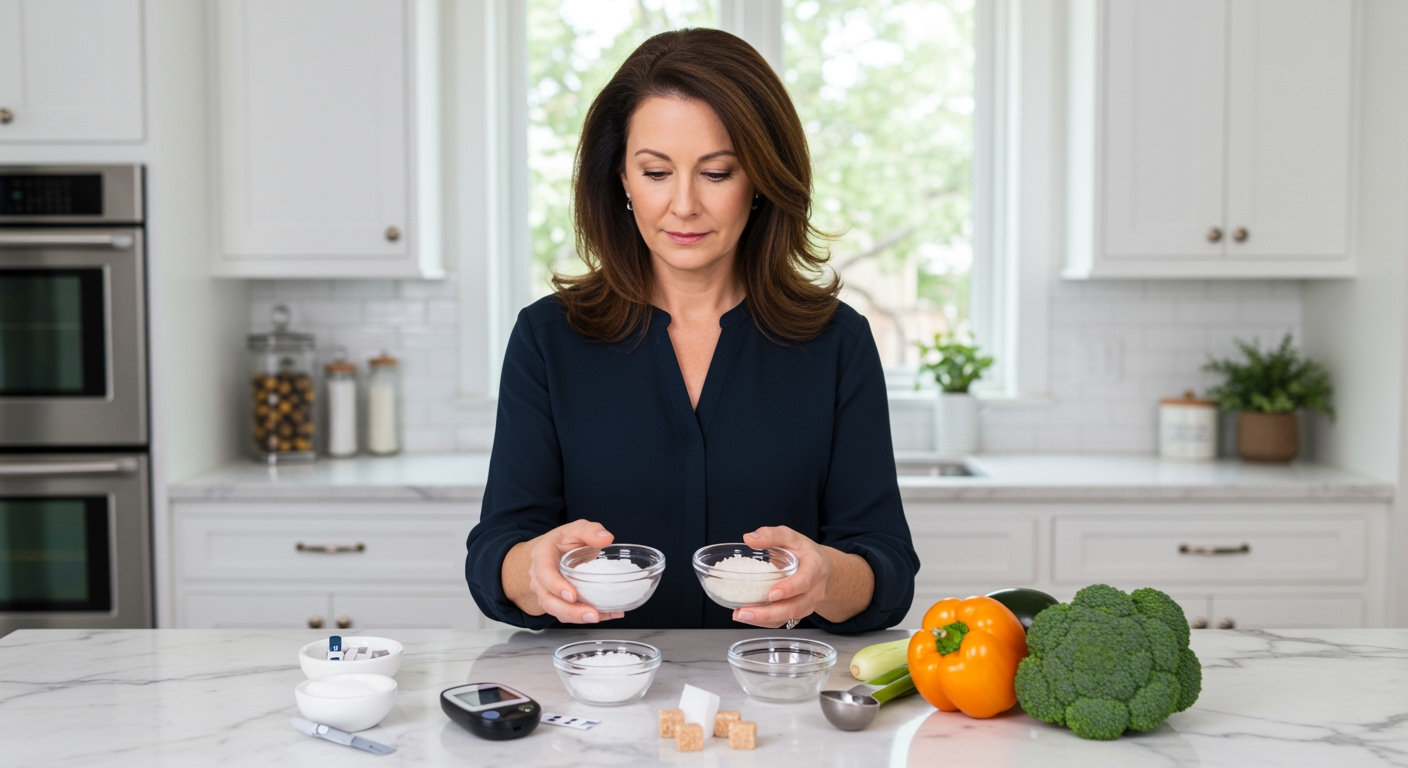✪ Key Takeaway: Sea salt offers no significant advantage over table salt for diabetes management since both contain similar sodium levels.
Introduction
You walk down the grocery store aisle and see dozens of salt options staring back at you.
The fancy sea salt packages promise better health while the plain table salt sits there looking ordinary and cheap.
Hi, I’m Abdur, your nutrition coach and today I’m going to explain whether sea salt is actually better than table salt for managing your diabetes.
What Makes Sea Salt Different From Table Salt?
Sea salt comes from evaporated seawater while table salt comes from underground salt deposits.
The processing methods create the main differences between these two types of salt.
Table salt goes through heavy processing that removes most trace minerals and adds anti-caking agents.
Sea salt undergoes minimal processing which allows it to retain small amounts of minerals like magnesium, potassium, and calcium.
However, both salts contain approximately 40% sodium by weight.
The sodium content is what matters most for people with diabetes, not the processing method or mineral content.
✪ Fact: One teaspoon of sea salt contains about 2,300mg of sodium, the same as table salt.
How Does Sodium Affect Blood Sugar Control?
Sodium does not directly raise your blood glucose levels like carbohydrates do.
Instead, excess sodium creates problems that make diabetes management much harder.
High sodium intake increases blood pressure by causing your body to retain more water.
This extra fluid puts more pressure on your blood vessels and forces your heart to work harder.
People with diabetes already face higher risks of cardiovascular disease and kidney problems.
Adding excess sodium to this equation accelerates the damage to your blood vessels and organs.
The American Diabetes Association recommends limiting sodium to 2,300mg per day for most adults with diabetes.
✪ Pro Tip: Track your sodium intake from all sources, not just the salt you add to food.
Do The Trace Minerals In Sea Salt Provide Benefits?
Sea salt contains tiny amounts of trace minerals that table salt lacks.
These minerals include magnesium, potassium, calcium, and iron in very small quantities.
Some people believe these minerals make sea salt healthier for diabetes management.
However, the amounts are so small they provide no meaningful nutritional benefit.
You would need to consume dangerous amounts of sea salt to get significant mineral intake from this source.
For example, you would need about 100 teaspoons of sea salt to meet your daily magnesium needs.
That amount of sodium would be life-threatening and cause severe health problems.
✪ Note: Get your essential minerals from vegetables, fruits, and whole grains instead of salt.
Which Salt Should You Choose For Diabetes?
The type of salt you choose makes no significant difference for diabetes management.
Both sea salt and table salt deliver the same amount of sodium per teaspoon.
Your focus should be on reducing total sodium intake rather than switching salt types.
Most of your daily sodium comes from processed foods, restaurant meals, and packaged products.
The salt you add during cooking or at the table contributes only about 10% of your total sodium intake.
If you prefer the taste or texture of sea salt, use it in moderation.
If table salt works fine for you, there is no health reason to switch to sea salt.
✪ Pro Tip: Read nutrition labels to identify hidden sodium in packaged foods and sauces.
What Are Better Strategies For Sodium Reduction?
Reducing sodium intake requires looking beyond the salt shaker on your table.
Start by cooking more meals at home using fresh, whole ingredients.
This gives you complete control over the sodium content in your food.
Use herbs, spices, lemon juice, and vinegar to add flavor without adding sodium.
When buying packaged foods, choose options labeled low sodium or no salt added.
Rinse canned beans and vegetables to remove about 40% of their sodium content.
Gradually reduce the salt in your cooking to allow your taste buds to adjust over time.
✪ Fact: Your taste preferences for salt can change within 2-3 weeks of reducing sodium intake.
The Bottom Line
Sea salt offers no meaningful advantage over table salt for people managing diabetes.
The amount of salt matters far more than the type of salt you choose.
I would love to hear about your experiences with reducing sodium in your diet or any questions you have about managing diabetes through nutrition in the comment section below.
References
At NutritionCrown, we use quality and credible sources to ensure our content is accurate and trustworthy. Below are the sources referenced in creating this article:
- PMC: Salt and Diabetes: Does Sodium Affect Blood Sugar
- LifeBridge Health: Diabetes Food Myths: Sea Salt Healthier Than Table Salt
- Diatribe: Salt and Diabetes: Does Sodium Affect Blood Sugar
- AgaMatrix: Salt and Diabetes





